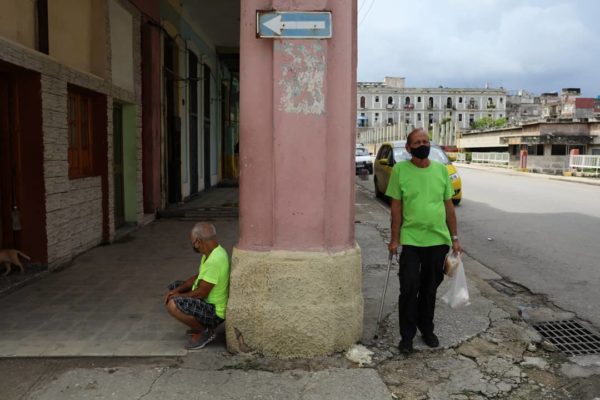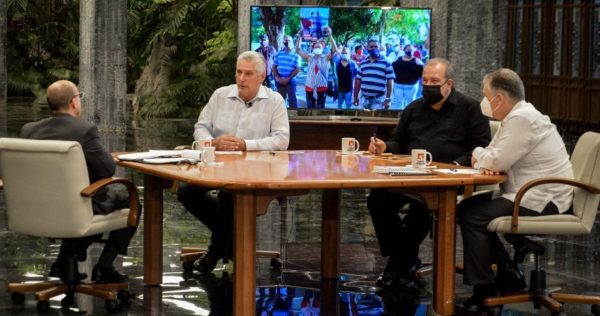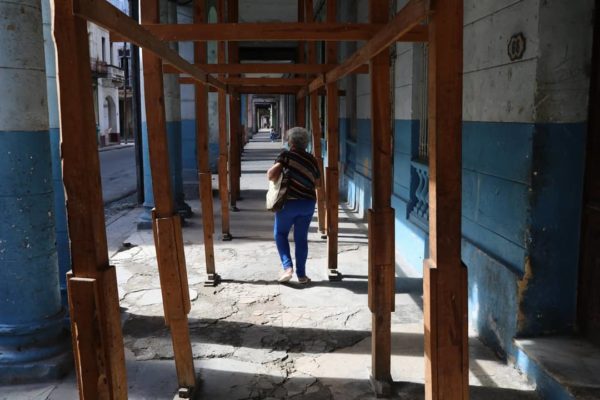Repression or Diversity, the Decision Facing Cuba
By Circles Robinson

HAVANA TIMES – The events in Cuba starting with the nationwide July 11th protests added to the alarming crisis already affecting the vast majority of the population.
The government continues presenting a “Separate Reality” to the public. Its constantly cheery monologue about internal affairs is reminiscent of Donald Trump and Fox News in the United States. But the big difference is that Trump and Fox News weren’t the only legal news sources in the US, while Cuban State TV is the only game in town on the island.
A total monopoly on legal newspaper, radio and TV on the island is a powerful tool for shaping public opinion, if only by saturation strategy. The constant discrediting and denigrating any-and-all voices that criticize government policies or leaders, without giving the victims a right of reply, is a vital part of the “absolute truth” presented by the Cuban Communist Party and Government.
Not everything State media says or reports is false. However, since they never have to answer to critics via op-eds or fact checks, their accounts raise many doubts to any thinking person.

By far the best example of the “Separate Reality” is the nightly Mesa Redonda (Roundtable) program. The show usually features Communist Party leaders or government officials and a couple friendly commentators who talk about important issues, all agreeing on virtually everything. For viewers wanting simple answers to difficult issues/problems it’s a soothing and totally predictable show.
They also specialize in letting you know how bad things are in countries not supporting the Cuban model, especially the United States. By comparison the Cuban system appears as an example to the world.
The problem facing this format for addressing important matters is that the “Separate Reality”, where the leaders have all the answers and “the peoples” best interests at heart, is that the other reality, the one most Cubans live on a day-to-day basis, is increasingly different.
On July 11th thousands spontaneously took to the streets crying out their reality which doesn’t appear on the TV screens.
A severe lack of food, extreme shortages of even the most basic medicines, and a negligent handling of the Covid-19 situation were the fuse. The song “Patria y Vida” (Homeland and Life) was the anthem and “Freedom” the most heard slogan.
President Diaz Canel immediately reacted by calling out “revolutionaries” and the security forces to combat the protesters, i.e. the general population, those in the streets. Although most Cubans were vaguely aware of the repressive capability of the Cuban police, State Security, and the armed forces, and their mission to combat any internal enemies, those with cellphones suddenly got a look at the ugly side of their supposedly respectful authorities.
It’s a side that scores of artists, intellectuals, and political dissidents had been aware of for decades, but not the general public, much less foreign visitors.
During the protests, an elderly woman shouted, “We’ve taken off our garb of silence.” In a sense, the government responded by taking off its mask of supposed caring and tolerance. The result has been well over 500 arrests, and the beginning of shameless summary trials to imprison many who protested.
Not allowing those charged with fabricated crimes, held incommunicado, to even have a defense, is the Cuban leaders’ interpretation of their Rule of Law. They believe this is their right, and the victims and families are suffering.
Making visible the people’s reality

It’s clear that the Cuban people are hungry to see their reality reflected.
On the flip side of the Mesa Redonda, is the film “Suite Habana” by acclaimed director Fernando Perez. The Best Documentary / Director of the 2003 Havana Film Festival, virtually without dialogue, depicts the everyday reality of a dozen hard working, struggling, ordinary, dignified Cubans. It was a film that had many Cuban viewers in tears, both of sadness and pride, as they left the movie theaters. It showed a reality, all around for the viewing, that was totally ignored by those in power and their media monologue.
Eighteen years later little has changed. In fact, the gulf between the two realities, the one on the TV and the one in the urban barrios and rural communities, has only widened further.

Today, after what we saw on July 11th, the desperate cry of both anger and joy, and the subsequent violent state repression, the government continues to ignore the reality on the still smoldering streets.
The Mesa Redonda (and the nightly news program) continue to prop up the State media’s Separate Reality. Night after night they point the finger at outside enemies for supposedly financing thousands of mercenaries and delinquents to exacerbate the country’s problems and fan the discontent. It continues slandering thinking, critical Cubans without giving them the right of reply.
Meanwhile, the illegal independent media, and the social networks, themselves not always factual, gain in credibility every day.
As a first step out of the quagmire, the Mesa Redonda could begin a new era in State media by allowing divergent opinions. That would mean forgetting the absolute truth mantra and have real debate, where thought out ideas and policies could emerge.
The other option is to let inertia continue to fuel the status quo, for who knows how long.
They will do what Raul Castro and the other Party leaders decide, but what’s much clearer after July 11th is that the “Separate Reality” strategy is losing takers.
No comments:
Post a Comment